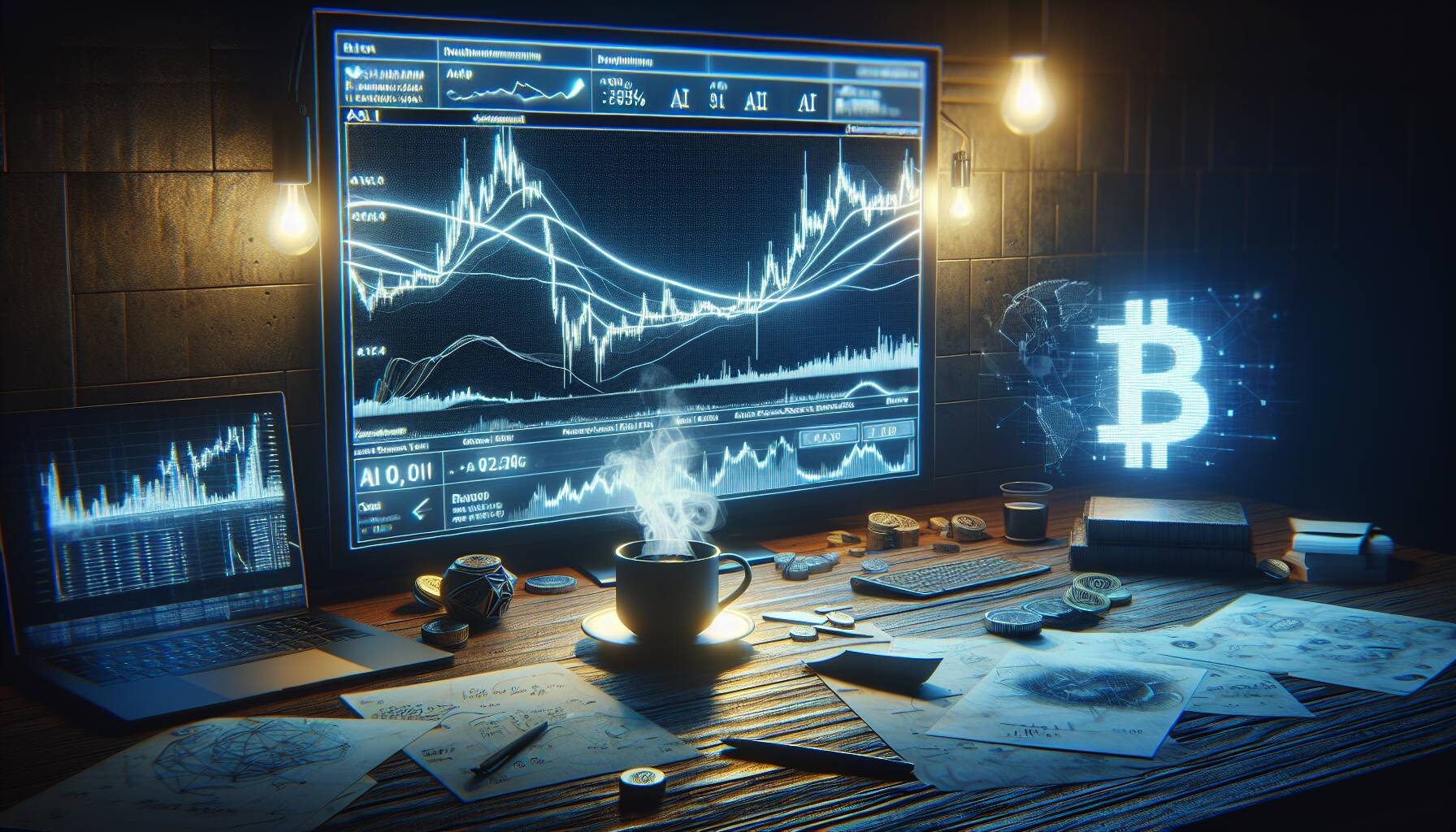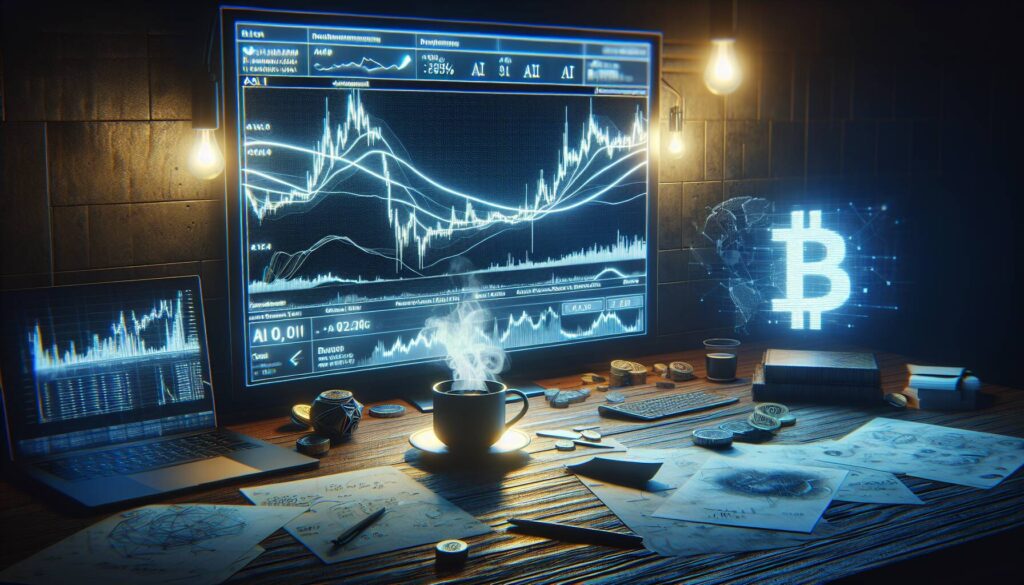In the ever-evolving landscape of cryptocurrency, recent trends reveal a concerning downturn for tokens linked to artificial intelligence (AI), while the largest crypto asset, Bitcoin (BTC), managed to maintain a slight uptick. Over the last 24 hours, Bitcoin’s value climbed by 0.6%, reaching $85,500, whereas tokens such as Bittensor’s TAO and Render Network’s RNDR experienced declines of 3.6% and 1.7%, respectively.
According to data from Coingecko, this underperformance among AI-related cryptocurrencies comes against a backdrop of unusual trading activity in Nvidia (NVDA) put options, specifically those connected to the chipmaker’s announcement about building AI supercomputers in the U.S. on Monday. Nvidia’s stock, often a barometer for the technology sector, saw noteworthy interest in short-term put options, particularly around lower strike prices that could suggest traders are bracing for volatility.
“My bet would be [these are] protective plays,”
an analyst from Convex Value commented, describing the recent move in options trading as an unusual occurrence. This strategic buying of put options acts like an insurance policy, allowing traders to protect their investments against potential declines in market value. The focus on out-of-the-money puts, especially at strike prices below Nvidia’s current price of around $110, raises eyebrows and hints at a cautious outlook among investors.
As the cryptocurrency market continues to fluctuate, the divergence in performance between major coins like Bitcoin and AI-connected tokens poses questions about investor sentiment and the overall health of the sector. A broader examination of the situation indicates a complex interplay of market forces at work, with significant implications for both digital assets and the tech industry.
“Someone knows something,”
asserted analytics service Merlin Capital on social media platform X, reflecting the sense of uncertainty that is palpable in the market right now. As both cryptocurrency traders and tech investors keep a keen eye on these developments, the next few days may present pivotal changes in market dynamics.

Impact of Recent AI Token Market Trends
Here are the key points regarding the recent performance of AI tokens and their relationship to market activities, particularly concerning Nvidia:
- AI Token Performance:
- Tokens related to artificial intelligence, like Bittensor’s TAO and Render Network’s RNDR, faced declines of 3.6% and 1.7% respectively.
- In contrast, Bitcoin (BTC) increased by 0.6%, highlighting disparity in cryptocurrency performance.
- Other AI-related tokens, such as FET, SEI, and GRT, also suffered losses of around 2%.
- Nvidia’s Market Activities:
- Nvidia announced plans to build AI supercomputers in the U.S., instigating notable trading activity in put options associated with their shares.
- Unusual activity was observed in short-dated put options, specifically for strikes below Nvidia’s current spot price of $110.
- Analysts interpreted this activity as potentially protective trades against market declines.
- Market Sentiments and Predictions:
- Market analysts speculate that the unusual put options activity suggests that some traders may have insider knowledge about possible future price declines.
- The volatility in AI token prices could influence investors’ strategies, leading them to either hedge investments or reconsider entering the AI token market.
“Someone knows something,” remarked Merlin Capital, indicating that informed trading decisions may significantly impact market dynamics.
AI Tokens Struggle While Bitcoin Rises: Analyzing Market Trends
The recent market movements have painted a stark contrast between established cryptocurrencies and those linked to artificial intelligence sectors. While Bitcoin continues its upward trajectory, increasing by 0.6% to reach an impressive $85,500, AI-related tokens have been experiencing notable declines. For instance, Bittensor’s TAO token plummeted by 3.6%, and Render Network’s RNDR dropped by 1.7%. This divergence presents a clear narrative of the current competitive landscape in the crypto sector.
One primary advantage for Bitcoin is its robust position as the leading cryptocurrency. Its stability and growing acceptance have fortified its status among investors, making it a safe haven compared to the tumultuous fluctuations of AI-specific tokens. Conversely, tokens like TAO and RNDR are grappling with an identity crisis, caught between the excitement of technological potential and the harsh reality of market volatility. The infusion of speculative trading into AI tokens can create significant risks, as seen in their recent downturns.
The backdrop of increased activity in Nvidia’s put options adds another layer to this analysis. The unusual trading patterns in Nvidia’s options, particularly those with strike prices significantly lower than its current trading value, suggest a possible bearish sentiment among traders. This could signal broader concerns about the tech sector’s future performance and place additional pressure on AI tokens, which rely heavily on the success of industry players like Nvidia. If expectations of Nvidia’s growth falter, AI tokens might suffer more profoundly, as their valuations are often buoyed by optimism in AI advancements.
On the flip side, traders and investors who are risk-tolerant may find opportunities amidst the turbulence in the AI token market. Those looking for potentially undervalued assets could capitalize on the current price dips, betting on a future resurgence in technology adoption. However, for conservative investors or those heavily invested in established cryptocurrencies like Bitcoin, the struggles of the AI tokens might present problems. A weakening of confidence in AI leaders like Nvidia could lead to broader skepticism in tech-based investments, which would reverberate through to the cryptocurrency market.
In summary, while Bitcoin remains a pillar of strength during this volatile period, AI tokens face the sharp edge of uncertainty. The dual narratives of stability in traditional cryptocurrencies and risks within emerging tech tokens suggest that investment strategies must be carefully tuned to navigate this evolving landscape.

















